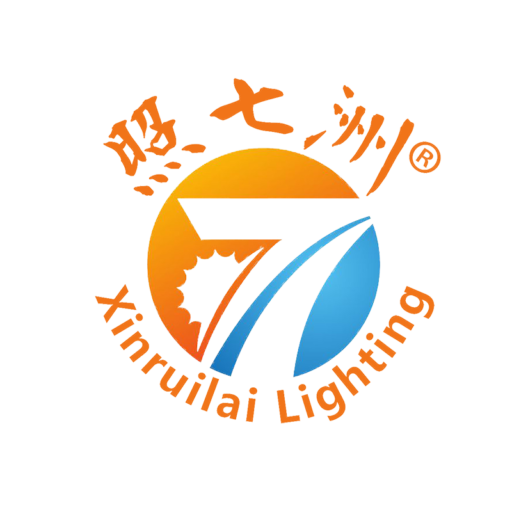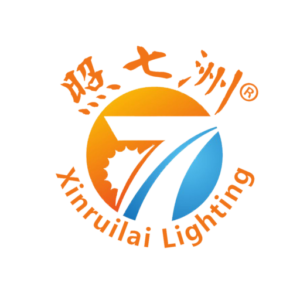Hybrid light sources are transforming the efficiency and functionality of LED work lights. By integrating multiple lighting technologies, these sources enhance brightness, energy efficiency, and adaptability across different working environments. A key aspect of hybrid lighting is balancing color temperatures to optimize visibility, especially in challenging weather conditions.
A common question is:
In mixed lighting, when 60% amber light (2700K) is combined with 40% cool white light (6000K), under what weather conditions will this mixture provide better visibility?
In this article, you can find the answer with the help of XRL. Our products can conform to the standards of E-mark/Dot/lP68/CE and So on. The answer lies in the interaction between different wavelengths of light and environmental factors such as fog, rain, and darkness.
What Are Hybrid Light Sources?

Hybrid light sources in LED work lights integrate multiple lighting technologies to create a more efficient and adaptable illumination system. These combinations can include:
LED and Halogen Combination
Provides immediate high brightness with the durability and energy efficiency of LEDs.
LED and Fluorescent Mix
Ensures wider light dispersion with a soft, uniform glow.
Dual Power Sources (Battery & AC)
Enables flexibility in usage, making work lights functional in both fixed and portable settings.
Combination of Different LED Light Beads
Integrating warm and cool LED light beads enhances visibility in various conditions.
A particularly effective approach is mixing different color temperatures, such as amber (2700K) and cool white (6000K), to achieve optimal lighting for various environments.
Principles of Hybrid Light Sources in LED Work Lights

Dual-Technology Integration
Hybrid light sources work by integrating two or more lighting technologies, improving performance and adaptability. For example:
- Incorporating dimming LED lights allows precise control over brightness levels, ensuring that users can adjust the lighting according to their needs.
- Linkable LED Light Bars enable modular lighting solutions, allowing users to extend or reduce illumination based on the workspace size.
- Using multiple types of LED light beads optimizes both power efficiency and light coverage, reducing glare while maintaining high brightness levels.
Adaptive Power Management
Hybrid LED work lights often feature smart power management, ensuring reliable operation under different conditions.
- Dimming LED lights regulate energy consumption, extending battery life and reducing power costs.
- Linkable LED Light Bars support adjustable configurations, allowing seamless expansion of lighting coverage when needed.
- Intelligent circuits in hybrid light sources automatically shift between AC power and battery backup, ensuring uninterrupted operation in case of power failures.
Enhanced Light Spectrum Control
Adjusting the light spectrum is essential for achieving optimal visibility in different working conditions.
- By combining different LED light beads, hybrid sources produce a balanced mix of cool and warm tones, reducing eye strain and improving clarity.
- Dimming LED lights offer customizable intensity levels, making them suitable for both high-intensity tasks and low-light environments.
- Linkable LED Light Bars provide flexibility in directional lighting, ensuring efficient illumination across large areas without unnecessary light wastage.
Visibility Analysis: 60% Amber Light + 40% Cool White Light

When utilizing a 60% amber (2700K) and 40% cool white (6000K) hybrid light source, the effectiveness varies depending on weather conditions and light dispersion properties.
Weather Adaptability
- Fog, Haze, and Snowy Conditions
Amber light (2700K) has a longer wavelength (580-590nm), allowing it to penetrate airborne particles more effectively than shorter wavelengths.
Cool white light (6000K), while brighter, tends to scatter in fog and haze, reducing long-distance visibility.
The combination provides a balance where amber light cuts through the fog while cool white light ensures close-range clarity.
Dimming LED lights allows users to reduce intensity based on fog density, preventing excessive glare.
- Clear Night Conditions
Cool white light enhances the visibility of distant objects, such as road signs and machinery edges.
Amber light reduces glare and eye fatigue, making long working hours more comfortable. Using Linkable LED Light Bars ensures even light distribution, covering larger areas effectively.
For tasks requiring precision, dimming LED lights allow workers to fine-tune brightness levels.
- Rainy Conditions
Cool white light reflects more on wet surfaces, increasing glare. Amber light penetrates through rain better but requires a stronger intensity for optimal illumination.
A hybrid mix should have a higher amber-to-white ratio (e.g., 70:30) for improved visibility in heavy rain.
Linkable LED Light Bars help cover larger workspaces efficiently, ensuring that workers have a consistent lighting source.
Scientific Explanation
- Light Scattering Theory
According to Rayleigh Scattering and Mie Scattering principles, shorter wavelengths (like blue light from cool white LEDs) scatter more in fog and haze.
Amber light scatters significantly less, making it more effective in low-visibility conditions.
Hybrid LED lights with dimming capabilities help reduce unnecessary glare while maintaining adequate brightness.
- Human Eye Perception
Cool white light (6000K) is best for high-detail work as it stimulates cone cells in the retina, enhancing object sharpness.
Amber light (2700K) is easier on the eyes as it stimulates rod cells, reducing glare and allowing better night vision.
Using Linkable LED Light Bars ensures uniformity, preventing areas of excessive brightness that cause discomfort.
Applications of Hybrid Light Sources in LED Work Lights

Construction Sites
- Hybrid LED lights ensure continuous lighting with dual power sources and dimming controls.
- Linkable LED Light Bars allow customized setups for different project sizes.
- Amber and cool white combinations improve visibility in dusty and foggy environments.
Emergency and Outdoor Use
- Hybrid light sources are ideal for search-and-rescue operations where lighting conditions vary.
- Amber light enhances visibility in adverse weather, ensuring that rescue teams can work effectively.
Industrial and Manufacturing Facilities
- Linkable LED Light Bars help maintain uniform lighting, reducing shadows and improving safety.
- Dimming LED lights reduces energy consumption, making operations more sustainable.
Conclusion
A 60% amber + 40% cool white hybrid light source offers superior visibility in light fog, snow, and clear night conditions, but adjustments are needed for heavy rain and dense fog.
By leveraging dimming LED lights, linkable LED light bars, and hybrid LED light beads, users can create customized lighting solutions tailored for specific work environments. Understanding these principles ensures that LED work lights deliver optimal performance, efficiency, and adaptability.






